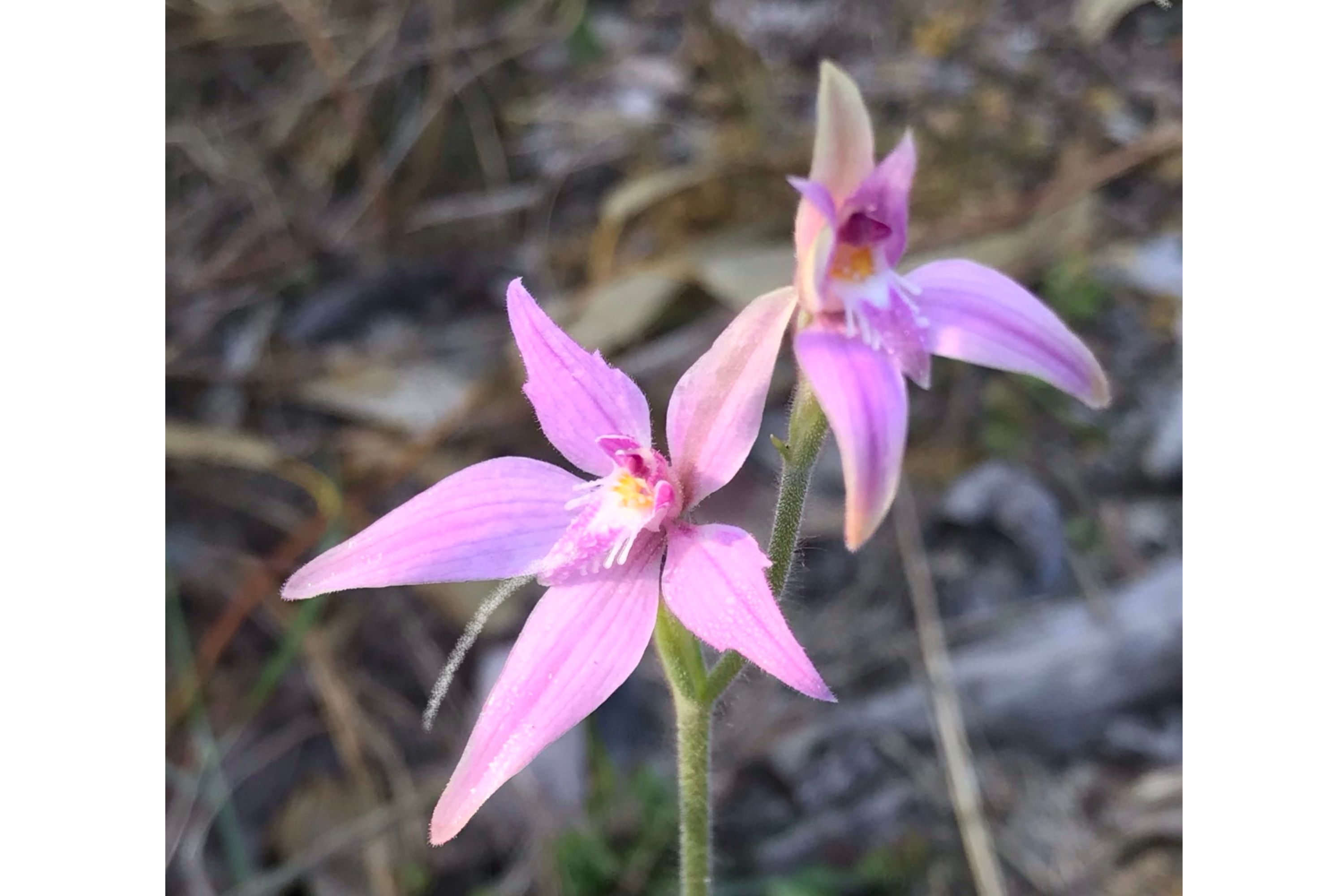Spider orchids
(Caladenia nana)

Description
Caladenia, commonly known as spider orchids,is a genus of 350 species of plants in the orchid family, Orchidaceae. Spider orchids are terrestrial herbs with a single hairy leaf and a hairy stem. The labellum is fringed or toothed in most species and there are small projections called calli on the labellum. The flowers have adaptations to attract particular species of insects for pollination. The genus is divided into three groups on the basis of flower shape, broadly, spider orchids, zebra orchids and cowslip orchids, although other common names are often used. Although they occur in other countries, most are Australian and 136 species occur in Western Australia, making it the most species-rich orchid genus in that state. Orchids in the genus Caladenia are terrestrial, perennial, deciduous, sympodial herbs with a few inconspicuous, fine roots and a tuber partly surrounded by a fibrous sheath. The tuber produces two "droppers" which become daughter tubers in the following year. There is a single hairy convolute leaf at the base of the plant. Most species have an enlarged cell at the base of each hair. The leaf may be medium-sized to large, fleshy or leathery, lance-shaped to oblong, but is always simple, lacking lobes and serrations. The inflorescence is a raceme with from one to eight resupinate flowers. The three sepals and two petals are free and similar in size and shape to each other. In some species, the sepals or petals or both have narrow tips with club-like ends. As is usual in orchids, one petal is highly modified as the central labellum. The labellum is divided into three parts, each of which usually has a fringed or dentate margin, while the central lobe has stalked or button-like calli which are often in rows. The sexual parts of the flower are fused to the column, which has wing-like structures on its sides. Most species flower in early spring but some species, such as the winter spider orchid (C. drummondii) flower in other months. The fruit that follows flowering is a non-fleshy, dehiscent capsule containing up to 500 seeds. Most caladenias are endemic to Australia. Eleven species, ten of which are endemic, occur in New Zealand with one also occurring in Australia. Caladenia catenata and C. carnea occur in New Caledonia, with the latter also found in Indonesia. There are about 136 species endemic to the south-west of Western Australia, 114 of which have been formally described and a further 18 hybrids which have been described and named.
Taxonomic tree:







